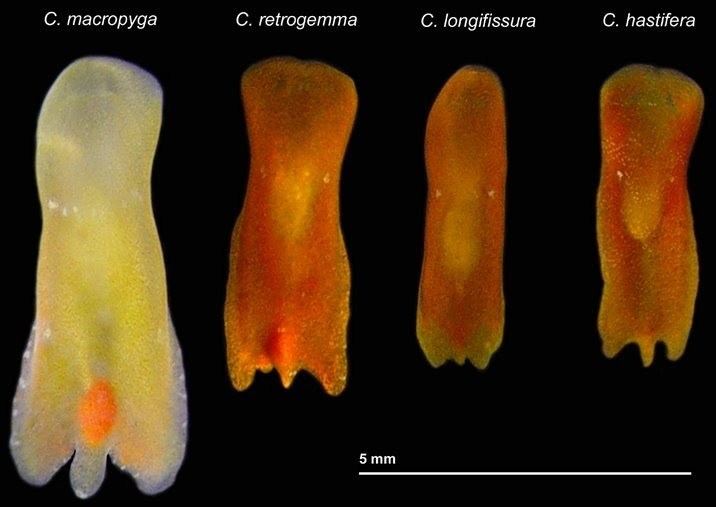Kingdom Animalia Class Acoela Rank Genus | Phylum Xenacoelomorpha Family Sagittiferidae | |
 | ||
Similar Sagittiferidae, Acoela, Acoelomorpha, Convolutidae, Symsagittifera roscoffensis | ||
Image011
Convolutriloba is a genus of marine acoelomorph worms.
Contents
They possess shield shaped bodies with a rounded anterior and three caudal lobes, though the number may vary in mature individuals. They may have an indentation on each side of the body near the anterior end. They usually are a few millimeters to a centimeter in length and under a millimeter thick. Though they have muscles throughout their body, they move using cilia to glide.
They have symbiotic algae that give them a green or brown colour. They also prey on small crustacean larvae like artemia and copepods. However they cannot survive for long periods in the dark even if they are fed. The mouth is located on the ventral surface. When feeding, they raise their front ends and fold the lateral edges of their body downward forming a funnel. Prey are trapped by lowering the body onto them.
Individuals are hermaphrodites. They reproduce both sexually and asexually. They have captured scientific interest because of the various ways of agammetic asexual reproduction. During budding or architomy the offspring separate from the body by attaching to the substrate and tearing away. The offspring produced by sexual reproduction lack the symbiotic algae and will die unless they can pick them up within a few weeks.
Like all members of the family sagittiferidae they possess sagittocysts on their skin. Sagittocysts are needle like bodies 18-50 µm long that contain some secretory product. They can be extruded from the body by an associated muscle. They are believed to play a role in defence and prey capture. Ultrastructurally, they have a vesicular core surrounded by a mesh of actin filaments.
Due to their rapid growth in well-lit aquariums, they are considered pests.
Acoel convolutriloba longifissura
Systematics
References
Convolutriloba WikipediaPhoto Credit: Thomas Shannon
